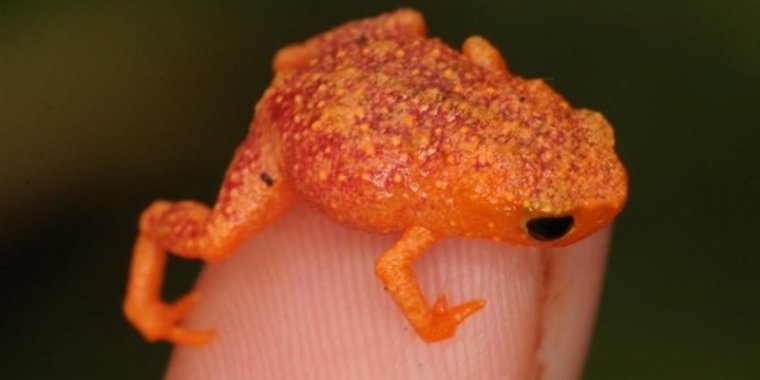| News / Science News |
Tiny Brazilian Frogs Deaf to Own Calls
Pumpkin toadlets, found on the leaf litter of Brazil's Atlantic forest, are among the smallest frogs in the world. An international team from Brazil, Denmark and the UK, discovered that two species of pumpkin toadlets cannot hear the sound of their own calls.

Two species of pumpkin toadlets cannot hear the sound of their own calls. ![]()
This is a unique case in the animal kingdom of a communication signal persisting even after the target audience has lost the ability to detect it.
"We have never seen this before: These frogs make sounds that they cannot hear themselves," Jakob Christensen-Dalsgaard from the University of Southern Denmark said.
The findings have been confirmed by anatomical studies at Cambridge University, UK, showing that the part of the ear responsible for high-frequency hearing is vestigial in these species.
Most male frogs call to signal their presence to the opposite sex and find a mate, but this is costly: it could attract predators and parasites, and it uses up energy and time.
Because these tiny frogs are brightly colored, diurnal and known to use visual signals, the researchers hypothesize that visual communication has replaced acoustic communication.
The movement of the throat when males are calling could constitute a visual signal, in which case the call itself would represent a by-product of the true signaling behavior.
Like many brightly-colored tropical frogs, pumpkin toadlets are highly toxic, which may lower the risk of predation when they are calling. (Tasnim News Agency)
YOU MAY ALSO LIKE




